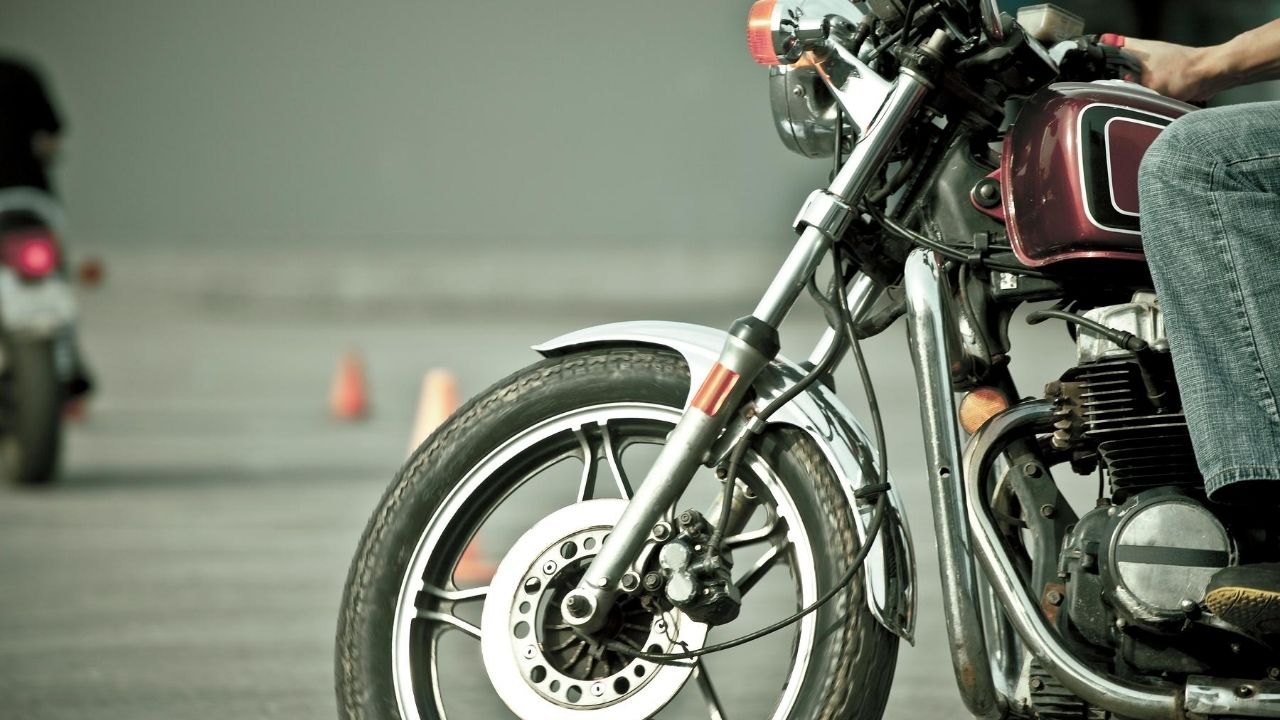Lifestyle
How Modern Technology Is Helping To Improve Motorcycle Safety

Statistics from the National Highway Traffic Safety Administration show that almost 5,000 motorcyclists died in accidents in 2018 alone and motorcyclists represent one of the highest-risk groups of road users.
Still, the number of people owning and riding motorcycles continues to rise year on year, with many people enjoying the freeing and thrilling experience of being on a bike, as opposed to the confines of a car.
Fortunately, as modern technology continues to advance at an extraordinary rate, new breakthroughs and developments are helping motorcyclists stay safer on the roads, hopefully leading to reduced numbers of fatalities in the years ahead and stronger safety standards for drivers and passengers alike.
At a time when some motorcyclists sometimes still refuse to wear helmets while driving, these modern gadgets and technologies could help to usher in a whole new standard of motorcycle safety, and here are just a few examples of exciting innovations for bike riders to check out.
Smarter Helmets
Helmets have always been one of the most important pieces of motorcycle safety gear, able to withstand shocks and absorb energy at the point of impact, protecting the skull and brain when accidents and collisions occur.
Helmets can save lives and should always be worn, and modern helmets are safer than ever, equipped with whole new features like rear-view cameras that allow riders to see behind them without needing to turn their heads and Bluetooth technology too for keeping in touch with other riders and using connected devices to get around safely.
Tire Pressure Monitors
Checking tire pressure is a key part of regular motorcycle maintenance, and driving around on low-pressure tires can be disastrous, loosening your level of control over the bike and even increasing your fuel consumption too.
Fortunately, many modern motorcycles come equipped with electronic tire pressure monitors that keep track of tire pressure at all times, letting you know if it’s too low and advising you of the right time to pump your tires back up.
Airbag Attire
Airbags have been one of the most important safety features in cars and vans for many years now, saving over 50,000 lives from 1987 through to 2017, but motorcycles rarely come equipped with airbags and riders often fly right off their bikes entirely when accidents occur, rendering in-bike airbags relatively useless in many situations.
Fortunately, technological experts have come up with a clever way to offer airbag benefits to bike riders through specially-designed clothing, fitted with airbags on the inside. Vests and jackets are now available with these built-in airbags that are able to deploy in an instant when an accident occurs, absorbing shocks and protecting your body.
V2V
V2V stands for ‘vehicle to vehicle’ and it could be the next big step for road safety for drivers and passengers of all kinds of vehicles, including motorcycles. With V2V technology, vehicles are essentially able to ‘communicate’ with one another and then deliver messages to the drivers.
For example, if a bike is riding up alongside a car, the car driver might not usually be able to spot the bike and may accidentally drive right into it while turning or changing lanes. With V2V installed, the driver’s car could issue a warning or alert message before they attempt to turn, letting them know that the bike is there.
Satellite Tracking
Imagine riding your bike out in a rural or deserted area and suddenly running out of fuel, finding yourself with no cell service, no way of contacting anyone who can help you, and no obvious way out of this scary situation. Well, many modern bikes come equipped with satellite tracking devices that can help you to call for help if needed.
This can also be very useful if your bike potentially gets stolen, as the satellite tracker can be activated remotely, leading police to your bike’s location and giving you a much better chance of recovering your vehicle without any issues.
Adaptive Headlights
Headlights have often been an issue for motorcycle owners as they tend to be smaller and weaker than the headlights found on cars. So, when driving in low-light conditions, such as at night or early in the morning, you might struggle to see the scene ahead of you. This is especially seen when making tight turns, as the light can take a moment to shine on the road around the corner.
Luckily, modern motorcycles mostly come fitted out with high-powered adaptive headlights that make use of state of the art electronic sensors to adjust automatically to your surroundings, turning with the bike as you round corners in order to light up the road ahead of you and make it much easier to see.
ABS
ABS stands for the anti-lock braking system, and we’ve seen ABS installed in cars and vans for many years now, but it wasn’t a big part of bike design for a long time. Fortunately, those times are in the past, and many modern models of the bike come complete with efficient ABS to improve your safety.
An anti-lock braking system works by preventing the wheels from locking up when the brakes are applied too hastily or heavily in certain situations. An Australian study found that ABS could reduce the risk of death or injury from accidents by over 30%.
Conclusion
It’s inspiring to see just how far modern technology has come in terms of making roads and vehicles safer for all, and even though motorcycle enthusiasts have had to wait a little longer than car and van drivers for key features like ABS and airbags, it’s clear that things are starting to improve in a big way.
These modern innovations, from adaptive headlights to super smart helmets with rear-view cameras fitted right inside them, can make a massive difference to your safety every time you fire up your bike and hit the road, and it’s hopeful that these features will become the norm for all future motorcycle development, saving countless lives in the process.
Lifestyle
Wanda Knight on Blending Culture, Style, and Leadership Through Travel

The best lessons in leadership do not always come from a classroom or a boardroom. Sometimes they come from a crowded market in a foreign city, a train ride through unfamiliar landscapes, or a quiet conversation with someone whose life looks very different from your own.
Wanda Knight has built her career in enterprise sales and leadership for more than three decades, working with some of the world’s largest companies and guiding teams through constant change. But ask her what shaped her most, and she will point not just to her professional milestones but to the way travel has expanded her perspective. With 38 countries visited and more on the horizon, her worldview has been formed as much by her passport as by her resume.
Travel entered her life early. Her parents valued exploration, and before she began college, she had already lived in Italy. That experience, stepping into a different culture at such a young age, left a lasting impression. It showed her that the world was much bigger than the environment she grew up in and that adaptability was not just useful, it was necessary. Those early lessons of curiosity and openness would later shape the way she led in business.
Sales, at its core, is about connection. Numbers matter, but relationships determine long-term success. Wanda’s time abroad taught her how to connect across differences. Navigating unfamiliar places and adjusting to environments that operated on different expectations gave her the patience and awareness to understand people first, and business second. That approach carried over into leadership, where she built a reputation for giving her teams the space to take ownership while standing firmly behind them when it mattered most.
The link between travel and leadership becomes even clearer in moments of challenge. Unfamiliar settings require flexibility, quick decision-making, and the ability to stay calm under pressure. The same skills are critical in enterprise sales, where strategies shift quickly and no deal is ever guaranteed. Knight learned that success comes from being willing to step into the unknown, whether that means exploring a new country or taking on a leadership role she had not originally planned to pursue.
Her travels have also influenced her eye for style and her creative pursuits. Fashion, for Wanda, is more than clothing; it is a reflection of culture, history, and identity. Experiencing how different communities express themselves, from the craftsmanship of Italian textiles to the energy of street style in cities around the world, has deepened her appreciation for aesthetics as a form of storytelling. Rather than keeping her professional and personal worlds separate, she has learned to blend them, carrying the discipline and strategy of her sales career into her creative interests and vice versa.
None of this has been about starting over. It has been about adding layers, expanding her perspective without erasing the experiences that came before. Wanda’s story is not one of leaving a career behind but of integrating all the parts of who she is: a leader shaped by high-stakes business, a traveler shaped by global culture, and a creative voice learning to merge both worlds.
What stands out most is how she continues to approach both leadership and life with the same curiosity that first took her beyond her comfort zone. Each new country is an opportunity to learn, just as each new role has been a chance to grow. For those looking at her path, the lesson is clear: leadership is not about staying in one lane; it is about collecting experiences that teach you how to see, how to adapt, and how to connect.
As she looks to the future, Wanda Knight’s compass still points outward. She will keep adding stamps to her passport, finding inspiration in new cultures, and carrying those insights back into the rooms where strategy is shaped and decisions are made. Her legacy will not be measured only by deals closed or positions held but by the perspective she brought, and the way she showed that leading with a global view can change the story for everyone around you.
-

 Tech5 years ago
Tech5 years agoEffuel Reviews (2021) – Effuel ECO OBD2 Saves Fuel, and Reduce Gas Cost? Effuel Customer Reviews
-

 Tech6 years ago
Tech6 years agoBosch Power Tools India Launches ‘Cordless Matlab Bosch’ Campaign to Demonstrate the Power of Cordless
-

 Lifestyle6 years ago
Lifestyle6 years agoCatholic Cases App brings Church’s Moral Teachings to Androids and iPhones
-

 Lifestyle5 years ago
Lifestyle5 years agoEast Side Hype x Billionaire Boys Club. Hottest New Streetwear Releases in Utah.
-

 Tech7 years ago
Tech7 years agoCloud Buyers & Investors to Profit in the Future
-

 Lifestyle5 years ago
Lifestyle5 years agoThe Midas of Cosmetic Dermatology: Dr. Simon Ourian
-

 Health7 years ago
Health7 years agoCBDistillery Review: Is it a scam?
-

 Entertainment6 years ago
Entertainment6 years agoAvengers Endgame now Available on 123Movies for Download & Streaming for Free
